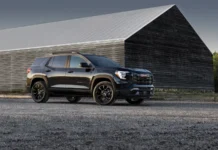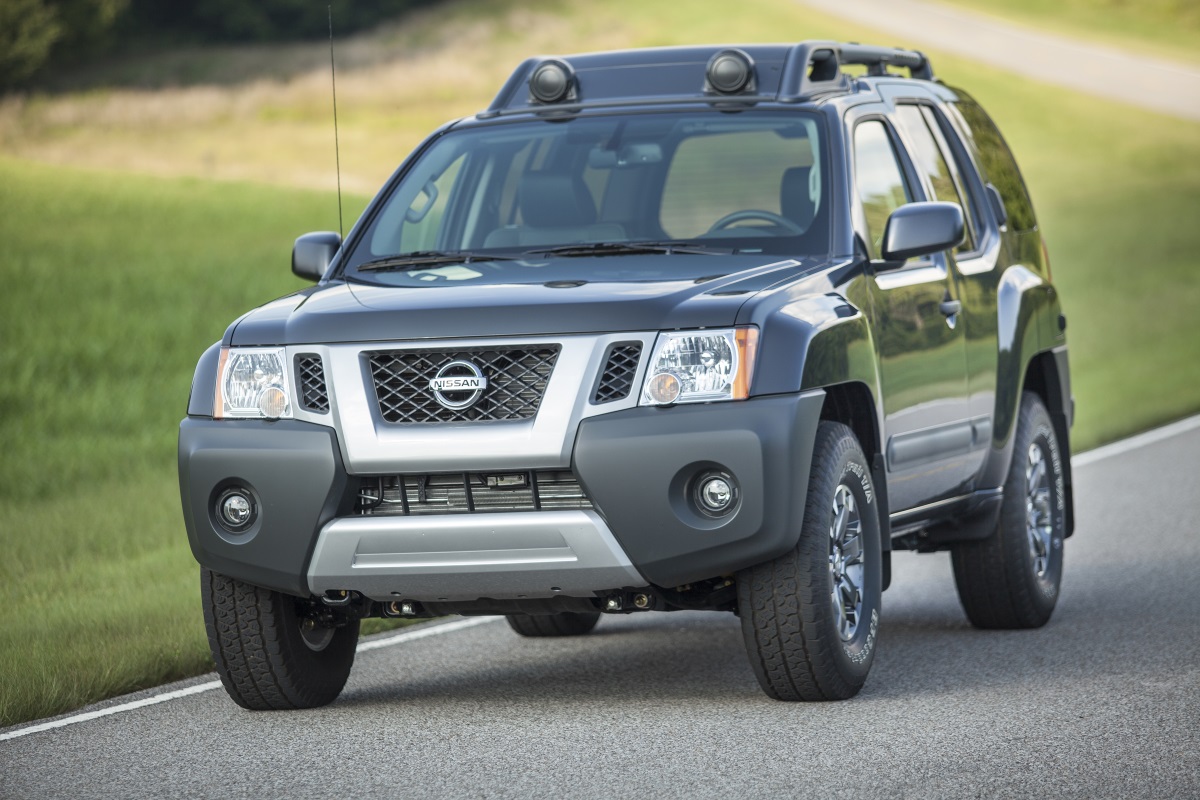The 2015 Santa Fe SUV does well, but deserves better. It fits between a compact and a mid-size crossover in size and price and looks sharp, goes fast with an available turbo engine and handles adroitly.
| STATS | Starting Retail Price | As Tested Price | HP / Lb-Ft |
| 2015 Hyundai Santa Fe Sport | $24,950 | $33,000 | 265 / 269 |
| EPA Rating MPG | As Tested MPG | Curb Lbs | |
| Rating: BUY IT! |
18 / 24 | na | 3,706 |
But many potential buyers are mostly aware of Hyundai’s popular Elantra and Sonata auto models. Each car had sales double that of the Santa Fe in 2014, although a respectable 107,906 Santa Fes were sold that year.
However, Santa Fe sales promise to be better in 2015 because of a rush by consumers to smaller SUVs and crossover vehicles instead of cars, thanks largely to lower gas prices as this is being written early in the year.
There’s two versions of the Santa Fe. The regular longer-wheelbase, larger Santa Fe is a 7-passenger model (with a cramped third seat), while the lighter, shorter-wheelbase Santa Fe Sport is a 5-seater. However, the rear center armrest, which contains cupholders, flopped down too much in my test Santa Fe instead of sitting in a good horizontal position.
The interior is quiet, and nicely laid out. Front console cupholders are easy to use, and there are a good number of storage areas and power outlets. Even the dashboard adjustable ventilation vents are strategically placed.
It calls for some extra effort to get in and out because of the Sport’s high floor, but doors open wide to assist entry and exit and occupants sit high. Still, the roofline creates bad rear blind spots for a driver, making the large outside rearview mirrors an absolute necessity.
The cargo area is roomy and the 60/40 split rear seatbacks significantly enlarge it when flipped forward. The backseat also has slide and recline functions, although its center is too stiff for comfort on long drives.
The Santa Fe Sport comes with either a sophisticated 2.4-liter 190-horsepower four-cylinder engine or a turbocharged 2-liter, 264-horsepower four-cylinder.
Both engines work with a six-speed automatic transmission with an effective manual-shift feature. The transmission initially shifted in a jerky manner in the regular “drive” position, but soon smoothed out because it apparently was adjusting itself to my driving style.
The Hyundai owner’s manual says, “The first few shifts on a new vehicle may be somewhat abrupt. This is a normal condition, and the shifting sequence will adjust after shifts are cycled a few times by the Transaxle control Module or Powertrain Control Module.”
The Santa Fe Sport is offered with front- or all-wheel drive with either engine. List prices go from $24,950 to $33,000, without a $875 freight charge.
The best estimated fuel economy is 20 miles per gallon city and 27 highway with the base engine and front-drive. The turbo engine delivers 19 and 27 with front-drive and 18 and 24 with all-wheel drive.
I tested the top-line $33,000 Santa Fe Sport AWD 2.0T with all-wheel drive and the turbo engine and averaged 20 miles per gallon during mostly steady speed freeway driving. The engine loafed at 2,100 rpm at 65 mph.
My test car’s upscale soft-to-the touch interior was packed with standard equipment. It included a push-button start, easily read electroluminescent gauges, power heated front seats, automatic temperature control, rearview camera, automatic open/close tailgate, touchscreen color audio display and steering wheel cruise, audio and phone controls.
The Sport also had selectable steering modes (Normal, Comfort and Sport). Normal mode provides medium steering effort and is the best for regular driving, while steering effort is lighter in comfort mode. Sport mode adjusts steering effort to a heavier, “sportier” feel. Sport is best left to aggressive driving–it’s just too heavy for comfortable street driving.
The 2015 Santa Fe Sport’s enhanced electric power steering is quick and accurate, although some may feel it’s a bit heavy even in Normal or Comfort mode. It definitely calls for extra effort in Sport mode.
Changes to the Santa Fe Sport’s suspension include firmer bushings and revised rear geometry. They enhance handling, which is quite good, but don’t put the Sport in BMW territory.
The ride is supple, with the suspension shrugging off bad bumps and potholes, and the brake pedal has a nice linear action. Braking is sure, assisted by electronic brake force distribution and brake-assist features.
Safety items include lots of air bags, stability management with traction control, blind-spot detection system, cross-traffic alert and lane change assist.
The Santa Fe Sport can be had with a pricey $4,350 “Ultimate” option package that likely will tempt many potential buyers.
That package includes a panoramic sunroof, navigation system with an 8-inch touchscreen, 12-speaker Infinity Logic surround sound system, ventilated front seats, heated rear seats, rear parking assist sensors and a heated steering wheel, which was welcomed during Chicago’s frigid winter weather.
My test Santa Fe Sport had this package and, with the freight charge, brought the bottom line list price to $38,350. However, keep in mind tht you can get the front-drive 2.0T turbo version for a $31,250 list price.
The Santa Fe Sport is worthy of its designation, especially the AWD 2.0T turbo model I tested. As with other Hyundais, it has the automaker’s 100,000-mile powertrain warranty.
On the TFLcar scale of:
- Buy it!
- Lease it!
- Rent it!
- … or Forget it!
I give the 2015 Hyundai Santa Fe Sport a Buy it!
Watch this TFLcar Colorado off-road review of the Santa Fe Sport.
































